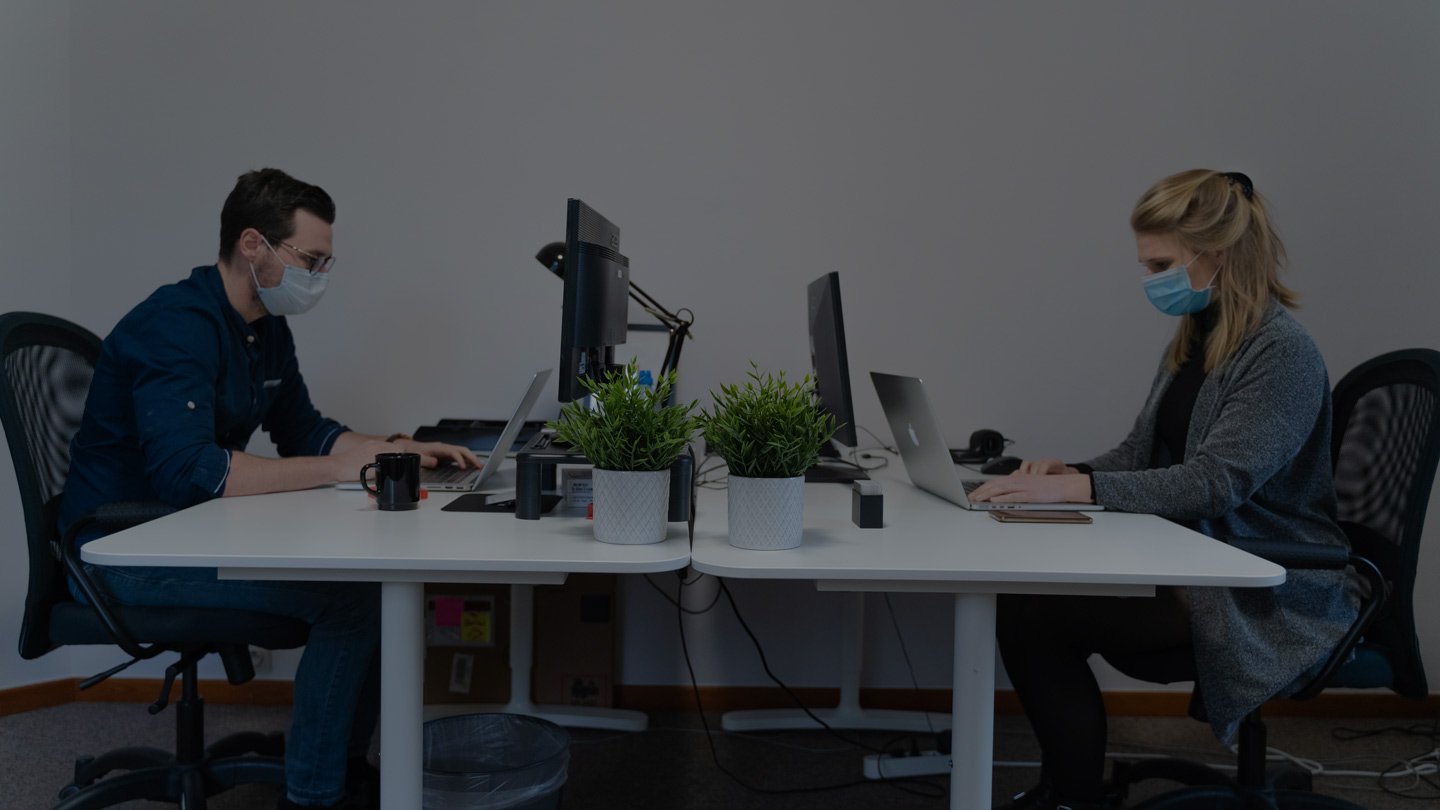COVID Implications on the Workforce
01/26/21 - Stacy Gilroy
We keep hearing about the ‘new normal’, but what was the ‘old normal’ before COVID? The structure and design of the workplace and the typical workday have been evolving for decades. Working remotely was becoming commonplace (yes!). Thanks to email and smart phones the typical 9 to 5 workday had all but disappeared (no!). Offices became seas of open seating and the person greeting you every morning at the front desk was replaced with a tablet.
So, when I think about the implications of COVID and what it looks like to physically be in the workplace now, I do not view it as a ‘new normal’ but instead as re-adjustment of the old ideas of how, when and where work can be conducted.
But before I dive into our adjusted normal, let me acknowledge all the workers who never stopped working, those with jobs that don’t grant them the luxury of working remotely. This world would not have made it through 2020 without our frontline workers, grocery store clerks and delivery drivers (just to name a few). An entire workforce of people who did not have the option or choice to work from home, and who the rest of us will forever be indebted to.
We see you, we acknowledge you and we greatly appreciate you!
What does life in the office look like now?
Everyone has a Zoom, Microsoft Teams, Google Meet account… instead of trying to figure out how to work the old, clunky videoconferencing system in your office or the polycom that you can never really hear people on, everyone can now see and hear each other at the drop of the hat on their laptop or phone. And if you do not turn on your camera during a call, we know that means you decided to keep your sweats on that day or maybe your background is messy.
Signage, signage and more signage
In an effort to be as compliant and safe as possible, workspaces have increased signage tenfold. Reminders to wash your hands are no longer reserved for restaurant bathrooms. Social distancing and mask requirement guidelines are posted to remind everyone of their importance. Instead of just labor laws, office posters are more relevant with important information for the safety and health of employees.
Emergency plans
Contingency and business continuity plans were often overlooked or put on the backburner for more urgent matters or in the “we’ll get to it later” pile. The pandemic forced companies to admit and accept that you always need to have a plan no matter how small the odds of that disaster occurring might seem.
Enforced and encouraged sick time
Prior to COVID people would come to the office when sick. Some companies actively discouraged taking sick days. Some employees saw it as a badge of their dedication and a measure of how important their work was. They would sniffle and sneeze their way through the day insisting they were fine. They spread their colds and flus among their co-workers.
Companies are now requiring employees to stay home when sick and I think it is a major change we should all be thankful for and continue to enforce long after the pandemic is over.
Office and desk space changes
When we get through this pandemic and look back on 2020, I think we can all agree that perhaps the silver lining in all of this will be that the open seating/small desk trend becomes a thing of the past. Gone will be the days of sitting so close to your co-workers that you feel like you are on an airplane.
If it takes a pandemic to make people realize personal space is important, then please let that be one of the takeaways. As plexiglass barriers are hung between desks and companies scramble to retrofit their offices to make sure everyone is six feet apart, let us keep this in mind the need for collaboration and how we actually use our office space for future office designs. I think I can speak for many employees when I say thank you in advance.
What does the future look like?
While many of the COVID influenced changes to the office have been an improvement to the workplace, I think the biggest gain to all is the new normal of genuinely caring about the health and wellness of our employees and colleagues. Checking in on each other to see how we are feeling, lending a helping hand, speaking up or reaching out when someone needs to talk or take a break has been the reset our heads-down, face in the screen society has needed. The pandemic has reminded us of both the importance of life beyond work and the importance of the well-being of the people around us.
And if this is our new normal, then I have high hopes for the future.

